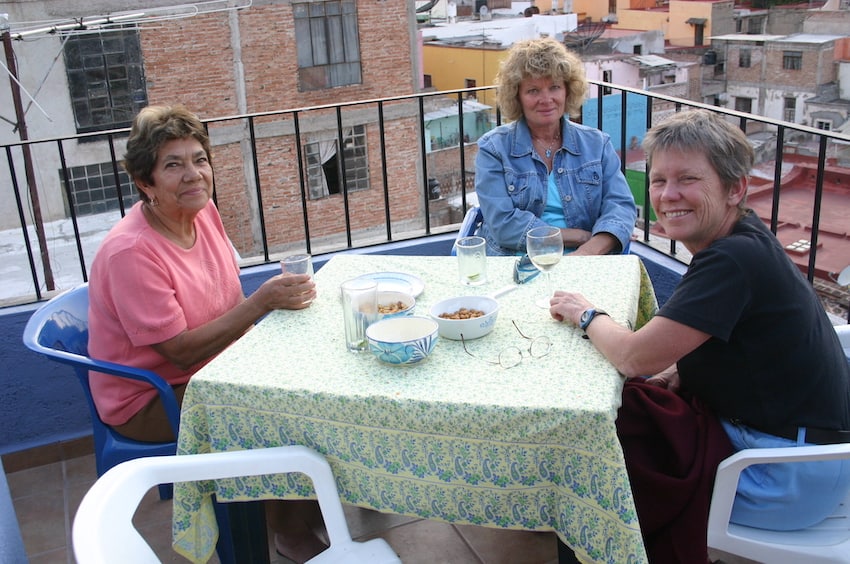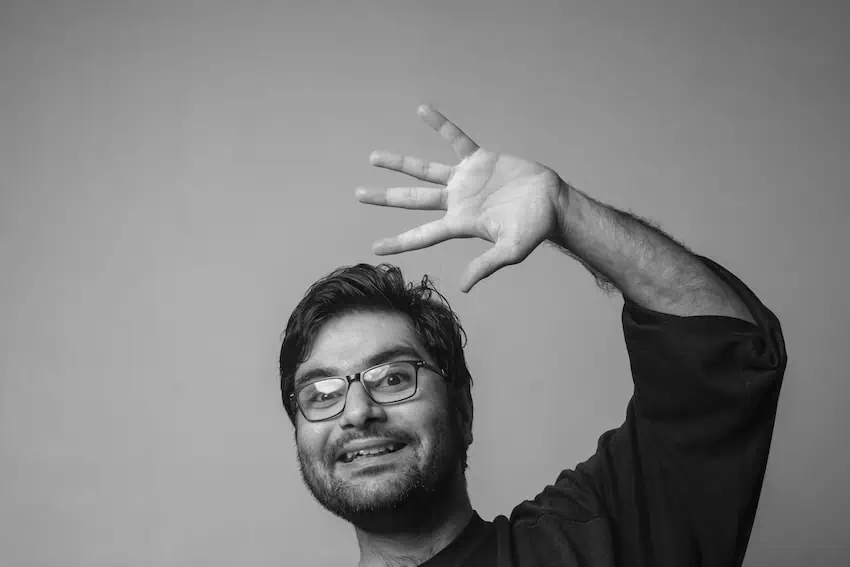About a year after my husband and I bought a house in Guanajuato, my sister visited us. One day, as we were walking down the street, she asked a stranger where the nearest bakery was, starting her question without a courtesy phrase like “buenos dias” or “perdóname.” Listening to her through my new Mexican lens, I winced, realizing she sounded rude. But only a year earlier, I had been speaking like that too — before I caught on to Mexican etiquette.
Although my siblings and I were brought up by parents from the U.S. Deep South who placed a high value on courtesy — much as Mexicans tend to do — we were not raised in the South. And because I grew up during the countercultural 1960s, I thought the focus on manners was superficial and silly. It was not until I began spending long periods in Mexico that I realized that courtesy might be an important social glue.

During my 20 years living part-time in Mexico, I’ve adopted a lot of that social glue. Here are some examples.
Greetings
When we first bought our home, I was unaware how important courtesy is in Mexico, and in retrospect, my to-the-point communication style embarrasses me. Thankfully, I have since softened my style, and, in fact, have grown very fond of the gentle niceties that Mexicans use. If, for example, I’m entering a shop, I know to first say “buenos días” or “buenas tardes.” Similarly, when getting on a bus, I always greet the driver and my fellow passengers.
When leaving a restaurant, I’m sure to say “buen provecho” when passing other diners. And if I’m ending a conversation or departing a shop, I’ve adopted the phrase I hear Mexicans use: “Bonito día!”
One day, I happened to pass a neighbor twice. The second time, I said “Hola,” though I realized afterwards that I rarely hear Mexicans use that word. I asked my teacher what I should have said. The answer? “Buenos días” or ”tardes” or “noches,” no matter how many times I see the person within 24 hours!

Even on WhatsApp, unlike in the U.S., where text messages can be haiku-like in their brevity, Mexicans tend to begin with a greeting. My Spanish teacher always starts her messages with “buenos días” or a similar greeting. I’ve learned to follow suit, though I occasionally forget, like recently, when I messaged my neighbor and began with just his name. When he responded with “buenas tardes, Louisa,” I realized my error.
Asking permission and expressing gratitude
Barry and I visited Guanajuato several times before buying our home. One year, we rented a room from Rebeca, a woman who is now our neighbor, and we would meet with our tutor in her living room. When Juan would leave, if Rebeca was nearby, he would say, “Con permiso,” later explaining that the phrase is a polite way to signal you’re departing and asking for permission to leave. It’s also a way of asking someone to make way for you when squeezing past them.
Anyone can say “muchas gracias,” but I started adding “muy amable” (very kind) after hearing other foreign residents say it. The phrase adds an extra note of warmth, and sounds less rote than just “gracias.”
I’m surprised at the situations in Mexico where I don’t expect to hear “gracias,” like when passengers get off a bus and thank the bus driver. Any opportunity!
Indirect communication
To preserve harmony, many Mexicans avoid making statements that might be perceived as negative. Instead of saying “no,” for example, they might say, “I’ll think about it.” I’ve learned that if I speak bluntly in Mexico, it can be misinterpreted as rude and offensive, since it clashes with a longer and more diplomatic communication style.
In writing, Spanish texts are longer, even in a direct communication style. If you look at an English-language paragraph and translate it into Spanish, the Spanish version will typically be about 20 to 30 percent longer because it uses more words to convey the same message.
Forms of address
My parents taught me at a young age to use the titles “sir” and “ma’am” when addressing older people. In Mexico, too, forms of address are an important sign of respect. One year, while my then 90-year-old father was visiting us in Guanajuato, I invited Rebeca, who was 75, over for a drink. Using the formal version of “you,” Rebeca addressed my father as “usted.” To me, they were both old, so what difference did it make? Meanwhile, at 59, I considered myself a mere “chica” compared to them! I address Rebeca informally because many years ago, she gave me permission to use the pronoun “tú” with her.
I still can’t bring myself to use the word joven (young man or woman), which Mexicans use to address a waiter, because when I was growing up, “boy” was the put-down my racist uncles used to address an African-American of any age. Instead, I say “disculpe” or “perdón.”
In Mexico, I’ve learned that courtesy, far from being superficial, as I once thought, is a kind of social lubricant that silkens interactions. After many years of living in Guanajuato, I find that the unexpected ways Mexicans express respect and courtesy still surprise and delight me.
Louisa Rogers and her husband Barry Evans divide their lives between Guanajuato and Eureka, on California’s North Coast. Louisa writes articles and essays about expat life, Mexico, travel, physical and psychological health, retirement and spirituality. Her recent articles are on her website, https://authory.com/LouisaRogers
